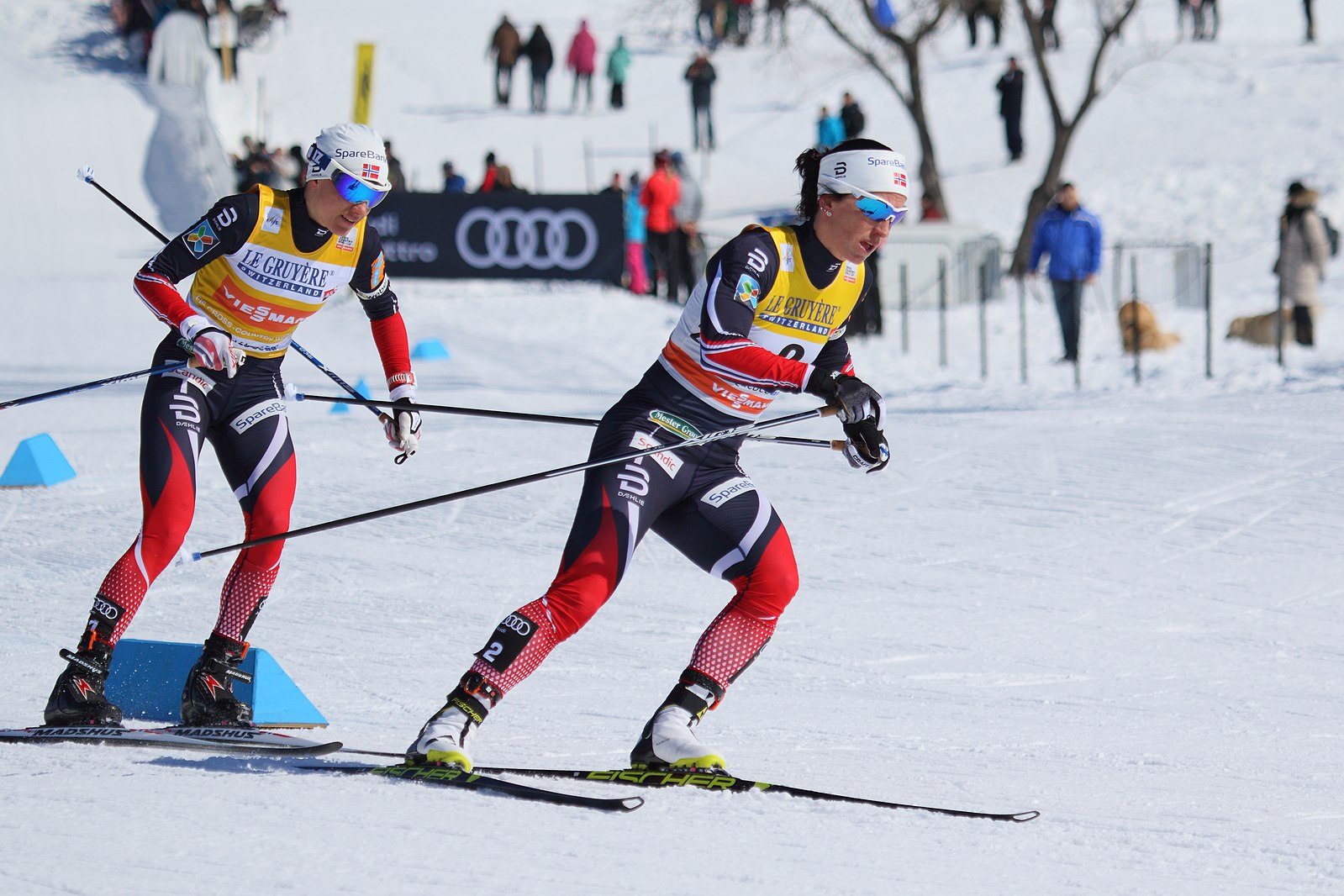Marit Björgen (1980) participated between 2002 – 2018 in five Winter Olympic Games and won 15 medals, which made her the most successful athlete in the history of Winter Olympic games. In 2017, Solli, Tonnessen, & Sandbakk published a longitudinal study of her training records, which demonstrated the characteristics of her training years between 2000-2017.
The statistical analysis of her training regime was conducted on the five-year training cycle (2010-2015), which was also the most successful time in her career in terms of racing records. Based on her training characteristics, it could be argued that her training regime had similar features to the POL training method, which gives a profound comparison between an evidence-based training method and a real-life example from the peak of the elite sport.
So what is polarised training method all about?
In recent years, the POL training method has achieved a large amount of interest across the sports but particularly in the field of endurance sports. The literature covers several studies that demonstrate its success in a well-trained and un-trained population. The POL training method distributes the training intensities into three zones instead of five zone model. The intensity distribution in the POL method is divided 80-20. The 80 percent of the training volume targets zone 1 that refers to the low-intensity zone below the Lactate threshold 1 (LT1). Approximately 15 percent of the training volume targets the high-intensity zone 3, which refers to the exercise region above the Lactate threshold 2 (LT2).
The POL method targets extreme spectrums of the training intensities by minimising the middle gear exercise intensity.
In short, the POL method targets extreme spectrums of the training intensities by minimising the middle gear exercise intensity (zone 2) that refers to the training zone between the LT1 and LT2. Whereas the modern understanding of endurance performance methodology agrees on that the majority of the training should be exercised at the zone one. Nevertheless, the science and the practitioners debate about the volume distribution between zone 2 and 3. The POL believers suggest that the relative benefit of the middle gear training is smaller compared to zone one or zone three and therefore, in the POL model only 5 percent is exercised at the zone 2.
The dilemma of comparing different training methods
One of the most comprehensive analyses of the POL is done by Neal et al. (2013) where they did a crossover study comparing the Threshold (THR) training approach to the POL and found superior gains through in the POL group over the THR group. Some studies have demonstrated that the POL may be a superior training method at inducing both, the peripheral and the central adaptations – for instance, improved mitochondrial and cardiac function. The rationale for this is that the large volumes of low-intensity training response well to the peripheral adaptation mechanisms. In contrast, the high-intensity training has been shown to be the most effective at inducing central adaptations.
The challenge between the methodology comparisons is that it leads one to choose a method over another and leaves nothing in between, thus creating a black and white dilemma. For instance, in Neal et al. (2013) study, two groups that followed different programs for six weeks found that the POL training had been more effective compared to the THR group. On the other hand, one could question whether the statement of the study would had been different if the study design had a third group, a mix of both training approaches, the POL and the THR, as for instance in the Esteve-Lanao et al. (2007) study.
Secondly, when interpreting training intensity related studies, it is important to look into the methodology and study design, since some studies divide the training intensity zones into five categories instead of three. Thirdly, in the Stöggl, & Sperlich (2014) study, the training volumes between the groups were not standardised, which can potentially lead to a misinterpretation. Therefore, this article focuses on analysing one training model and compares it to the real-life example, to assess its applicability in a practical setting.
Training volumes of elite level athletes
Elite level endurance athletes are known for high volumes of training. Training hours between 20 h to 30 h per week during the preparation phase are commonly seen training volumes among the elites. In minutes, that sums up from 1200 minutes to 1800 minutes per week. Considering the POL training intensity distribution and calculating 15 percent from the total volume to the high-intensity training, that totals a 180 min to 270 min of high-intensity training weekly.
In practical terms, if the athlete completes three interval sessions weekly, that would require 60 minutes of high intensity intervals per session, for instance 12 x 5min or a time at a heart rate (HR) zone 3, depending on how the distribution is calculated. Based on the norms and the guidelines, it is reasonable to state that 180 min to 270 min of high-intensity training in one week is a large quantity of high intensity training for any athlete, which may create challenges due to the cumulative load of the central and peripheral fatigue.
A glance at Marit Björgen’s training
Comparing the POL model distribution to Marit’s total training volume and the intensity distribution, her total volume increased gradually from approximately 500 h to 950 h from 2000 to 2015. In those years, her training volume was approximately 20 h a week during the General preparation phase (GPP) and decreased down to 15 h in the competitive season phase (CS). The intensity distribution of her training was as following 92.3 ± 0.3% at zone 1, 2.9 ± 0.5% at zone 2, and 4.8 ± 0.5% at zone 3 respectively.
Even, the racing records may be a poor parameter to correlate; it should be noted that annually the highest volumes of high-intensity training didn’t correlate with the results. In contrary, the racing records did correlate with the annual total training volume. Meaning, when the training volumes were at highest (950h), she achieved also the best results in competitions. Interestingly so, during the succeeding years 2010 – 2015, the annual training volume at zone 2 were at highest 2.9 ± 0.5% compared to the time before 2010.
From preparing to competing – the annual training distribution
In terms of the annual plan and volume distribution across the macro-cycles, the elite athletes normally achieve the peak of training volume during the General preparation phase (GPP), especially in the GPP2. In contrast, the lowest volumes of training are usually seen in the Competitive season (CS) due to the competition calendar and to the peaking strategies. Therefore, the relative distribution of training intensities can have major numeral difference across the season, which should be taken into an account when interpreting the percentage distributions. Anyhow, it can be expected that the POL model is more achievable, when training volumes are lower, approximately at 10 h to 15 h per week, which was also noted by Neal et al. (2013).
The POL model may be the most applicable strategy during the competitive season, whereas pyramidical distribution may serve well the general preparation phases
A similar trend was also seen in Marit’s macrocycle design. During the GPP1 and GPP2, the intensity distribution was more pyramidical and distributed zone 2 and 3 more equally. On the other hand, towards the CS and during the CS, the training hours were decreasing gradually from 20 h to 15 h and the intensity distribution during the CS was more polarised. In this light, the POL model may be the most applicable strategy during the competitive season, whereas pyramidical distribution may serve well the general preparation phases, especially in cases when the focus is on large range of endurance performance.
A similar distribution pattern and recommendations were also noted by Tonnessen et al. (2014) when investigating variations across the annual cycle of Olympic and World Champion endurance athletes. Lastly, the POL training approach seems to go also hand in hand with tapering strategies, where volumes are gradually reduced but the peak intensities are maintained.
Sport specificity when choosing a training method
The sport-specific characteristics is a vital element that needs to be taken into account before applying any training method, since endurance sports provides a broad range of sports with different physiological demands. For instance, a 1500 m elite level runner cardiovascular profile during flat out race differs largely to the elite-level Triathlete. The racing intensity in the Olympic distance triathlon is at approximately 65-80 % of the maximum oxygen uptake (Vo2 max) during the bike and run. Thus, why place only a small training volume to zone 2, since it can be seen a relatively sport-specific racing intensity for some sports such as Triathlon, in order to build a work capacity for racing.
Considering the cardiovascular demands of Marit’s race events, her races varied from one-kilometer ski-sprint to 30 km ski events, which sets a high demand for both energy systems, aerobic and anaerobic. In practice, her racing event’s varied from a few minutes of sprint efforts up to 90-minute long races. In sprint races, it’s speculated that the values of Vo2 raise up to 95 % of the peak and the relative distribution between the aerobic and anaerobic energy supply is approximately 75% / 25%. Losnegard (2019) noted that even in the long-distance races, the Vo2 uptake is up to 90 % of the Vo2 max, which demonstrates the high level of sport specific demand from both energy supplies, the aerobic and anaerobic. Thus, it is reasonable to see that the POL method is relatively close to the sport-specific needs in skiing for the athletes that do races from the sprint distance to long distances, like Marit.
VO2 Max and how to interpret it?
Lastly, let’s go back to the arguments on why the POL method may be superior over other training methods. Some science-based studies argue that the POL method aids bigger improvements on the Vo2 max to compared to the other methods such as the THR training approach, which makes the POL training approach superior. The Vo2 max is often seen as the golden spoon parameter of the endurance performance. However, there are a couple of points to be noted. Firstly, it has been noted that the Vo2 max and racing performance isn’t linear, which demonstrates that the Vo2 max isn’t be-all and end-all. In addition, Losnegard (2019) noted that the Vo2 does not even reach its peak values during the ski races.
Vo2 max is not a single factor that makes one successful.
The mean Vo2 max of Marit between 2010-2015 was 67.7 ± 1.7. The peak of her Vo2 max (70 mmol/kg/min) was recorded in 2012 and the lowest (64.5 mmol/kg/min) in 2010. Sandbakk et al. (2016) published a normative data set illustrating that the mean Vo2 max of the elite level female skiers was 71 ± 3 mmol/kg/min. Thus, it can be argued that her Vo2 max was not superior over the fellow competitors, which demonstrates that Vo2 max is not a single factor that makes one successful. Therefore, it is vital for any athlete or practitioners to evaluate, what are the performance parameters to be measured, since Vo2 max isn’t after all a single factor that defines endurance performance.
The perfect recipe for every athlete – does it exist?
An important factor that needs to be noted when interpreting intensity distribution is on how intensity distributions are calculated. The calculated distribution based on the HR data compared to the session goal method can make a major difference which was also noted in Marit’s longitudinal data. Marit’s training intensity distribution based on the session goal were 76.1 ± 1.1% for zone 1, 7.3 ± 1.2% zone 2 and 16.6 ± 1.2% for zone 3 sessions. Interestingly so, 21% of Marit’s zone 1 training were recorded from warm-ups and cool-downs, which demonstrates the importance of how the total volume, or the intensity distribution is calculated.
In summary, the evidence demonstrates that the POL method can be an effective formula to improve endurance capacity. It is a more question of how, when and to whom. The article did not discuss about individual characteristic, anyhow it is important to understand that not every athlete respond or tolerate well the large amount of high intensity training and vice versa. Therefore, the main takeaways of the article are that the POL method distribution should be evaluated carefully based on the total volume.
In practice, during the heavy volumes of training, pyramidical intensity distribution may be sensible strategy to consider. The POL training distribution can be an effective strategy during the CS and during the periods when the total training volume is moderate or low. Secondly, it is essential to pay attention on how the distribution is calculated since it can make a major difference and not all the scientific studies interpret the 80-20 similarly. The final point of this article is that the purpose of the article was not to disagree with any findings concerning the POL approach. The main target of the article was to open thoughts on how to interpret and integrate well-founded training formulas into a practical setting since it still seems we haven’t found the perfect recipe for every athlete.
Want to take your own, or your team’s, sports performance to the next level? Leave your contact details below and we’ll be in touch as soon as possible.


